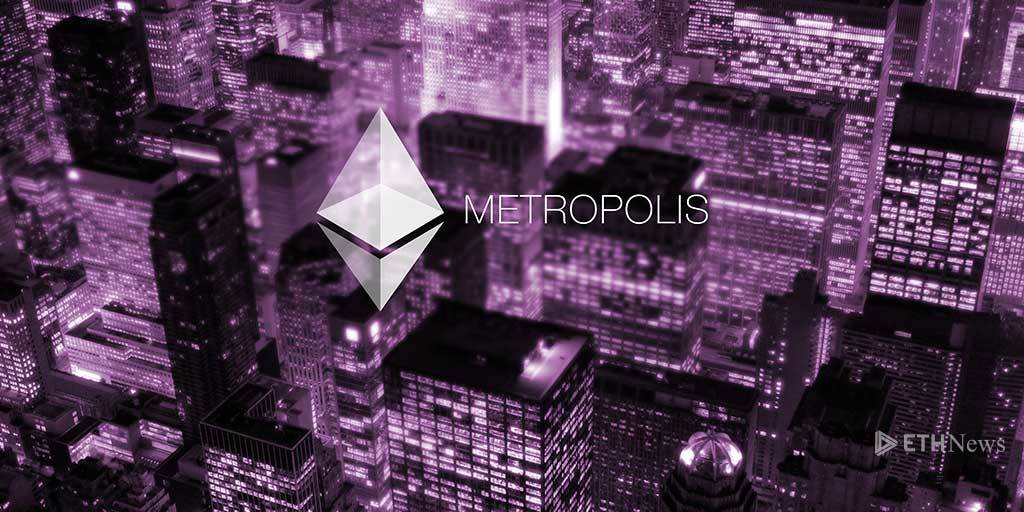Ethereum Roadmap
cryptocurrency·@ctyptouniverse·
0.000 HBDEthereum Roadmap
# **Ethereum Roadmap, steps toward Proof-of-Stake**  Ethereum is a very ambitious process. Since it's inception there have always been delays on new releases. Of course, with a major and revolutionary project as Ethereum, there will always be unknown that aren't factored upfront into the build. Ethereum has a built-in programming language that allows you to specify whatever "rules" for a smart contract that you want, and the blockchain executes them for you. Another thing that raises complexity is that Ethereum cliens have different programing languages, and making changes to all of them is a tricky and difficult task. Ethereum project, a change from proof-of-work to proof-of-stake has been planned in four locksteps. Just like the previous two, switch to Metropolis requires a hard fork. This means that nodes and miners that fail to upgrade to the new blockchain will be left behind. Because of the possibility of a split, hard forks are always taken seriously seriously. There was one hardfork after DAO hack, resulting in a chain split. And, that did not help Ethereum, it took one year for price to recover. # **Frontier** Ethereum Frontier was the first live release of the Ethereum network. It was released on July 2015. Frontier was backbone of Ethereum ecosystem allowing people to start mining and also for exchanges to start running. This was the first version, which paved the way for further development. # **Homestead** Homestead is the second major Ethereum upgrade and the current phase that we are right now. The development included several protocol upgrades creating the ability to do further changes. # **Metropolis** Metropolis is next major Ethereum upgrade. This is the version that will open the door to masses. Metropolis was introduced on github for testing and its just a matter of time before it goes live. Not only introcuding further protocol upgrades and opening the door for casper, but also new interfaces for non technical users. This will help gain further adaptation and also it will help developers create easy to use apps. # **Serenity** Serenity is the last phase in Ethereum network. Release was planned for the start of 2018, but we might have some delays, as usually. Serenity goal is to switch from proof-of work to proof-of-stake, by using a method called Casper. # **The benefits of proof-of-stake** Currently Bitcoin and Ethereum to validate the transactions use a method called proof-of-work which means that miners have to solve crypto-puzzles using dedicated hardware. For every block they mine they will get rewarded with new issued coins. The problem is that there is always a competition who will be the first to solve the problem, which means there will be a lot of electricity spent. This incentivize miners to act within network rules, otherwise their block will not be accepted by the network, resulting in a waste of energy spend and no rewards to cover electricity bill at the end of the month. The solution is proof-of-stake. This system means that it will make the entire mining virtual. Instead of having miners to validate transaction, we will have validators. Validators will stake their ethereum to be part of validating process. Currently it is is speculated that the minimum is 1,000 ether are required to be staked in order to be part of staking. With current prices, it is around $200,000. Stakers will be rewarded with transaction fees, and if they don't act accordingly their stake will be confiscated by the network. There are a lot of benefits with proof-of-stake. The most important is energy. Bitcoin miners alone currently spend around $50,000 dollars per hour, day and night. This is a lot. This means that around $450 million dollars a year are spend just to keep bitcoin ecosystem up and running. This can't go on forever. By switching to proof-of-stake, it will make the whole ecosystem virtual and will cut almost all electricity cost. With proof-of-stake you can use your laptop to validate transactions, and collect fees. This makes the whole system way more secure, because it will be more costly to try and attack the system. 1,000 ether is more expensive than electricity bill, because it will be taken away almost immediately if somebody tries to act funny. This makes almost impossible 51% attacks, compared to proof-of-work. Other benefits will be no special equipments advantage (like ASIC advantage on Bitcoin network). Block creation will be way faster and also will make the blockchain scalable by introducing the concept of “sharding”. In comparison Bitcoin can approve 3-4 transactions per second and Ethereum around 20 transaction. It is estimated that Visa network can process around 55,000 transactions per second. This is minuscule compared to Ethereum network after introduction of Casper. With Sharding method, Ethereum ecosystem will be able to validate 1 million transactions per second, creating for the first time possibility of micro-payments. ## Follows and upvotes are appreciated :) --- **Disclaimer:** The information contained herein is not guaranteed, does not purport to be comprehensive and is strictly for information purposes only. It should not be regarded as investment/trading advice.
👍 ctyptouniverse, ahuruglica, ppitonak, aubreyferreira, cryptovenn, attalis, sebsteem, corkandkerry, vanessa11val, stratoslaspas, cryptothenic, rezacoin, klipnov, uanxufree, neitsab, leosp, jozefhomola, lewis831, deobrands, ahsenshah, fahadysf, gorik, ep1804, livingpeace, grateful, vtep, sheinix, thecreativerebel, pharmacy-jinni, jamesmorgan, upandadam, kuenerson, tre608, shruggr, cryptopin, devcon, quantumhealing, jnem, ztephen, francescod, cryptokaubojai, anthonyrosamilia, mevlut34, xjitu, wolfdschreiber, b-run, truetellerinvest, toyotheophilus, cryptoboy111, janisrijnieks,